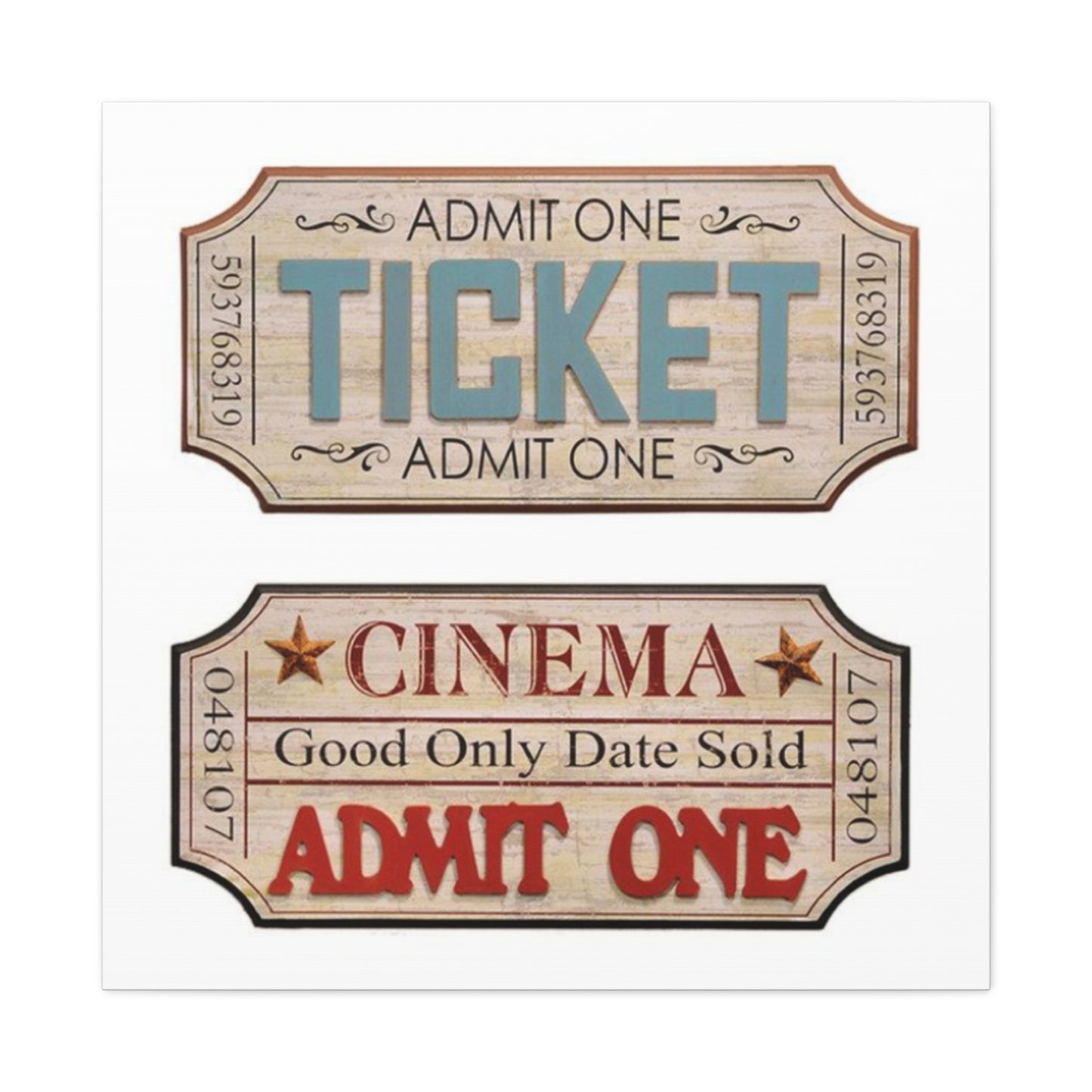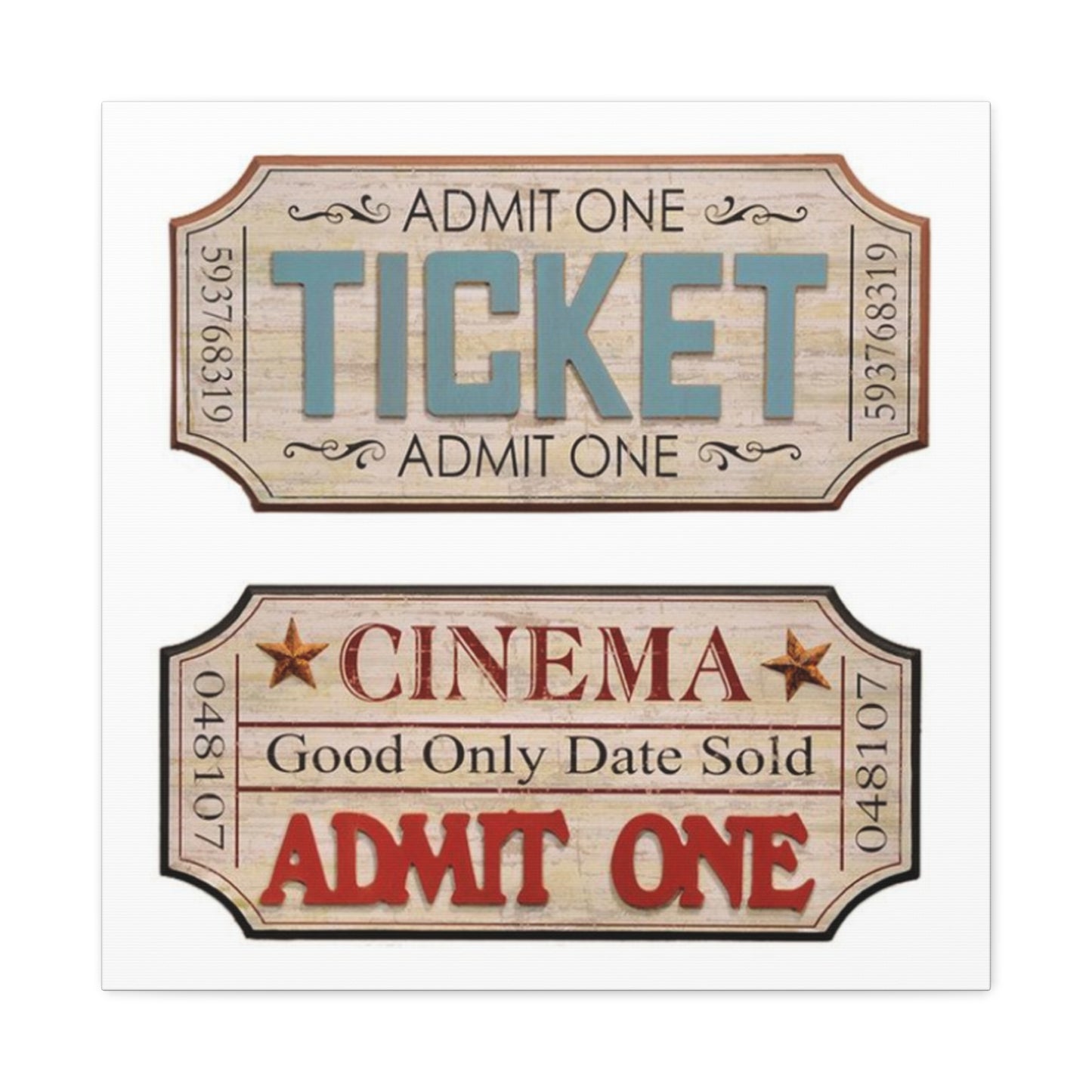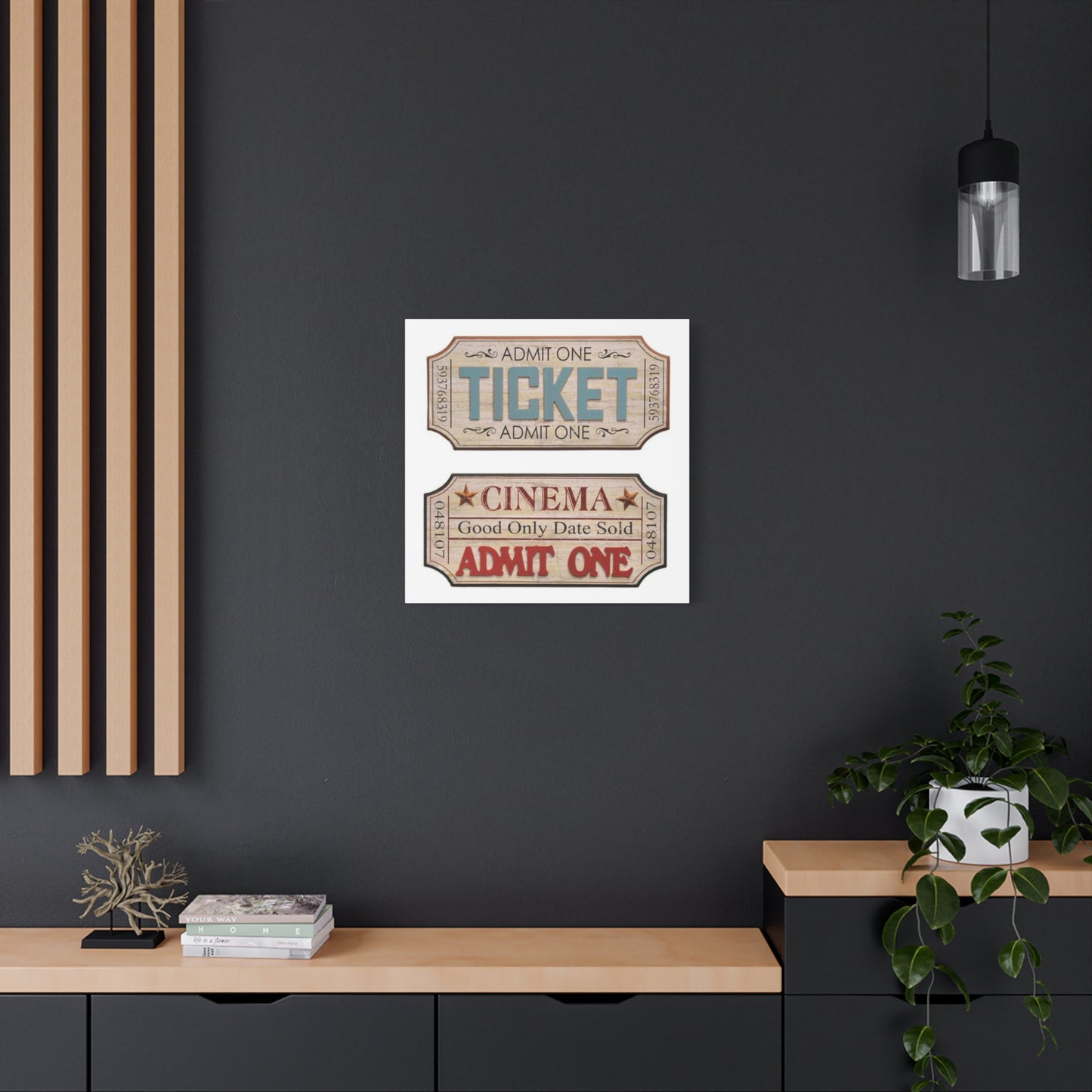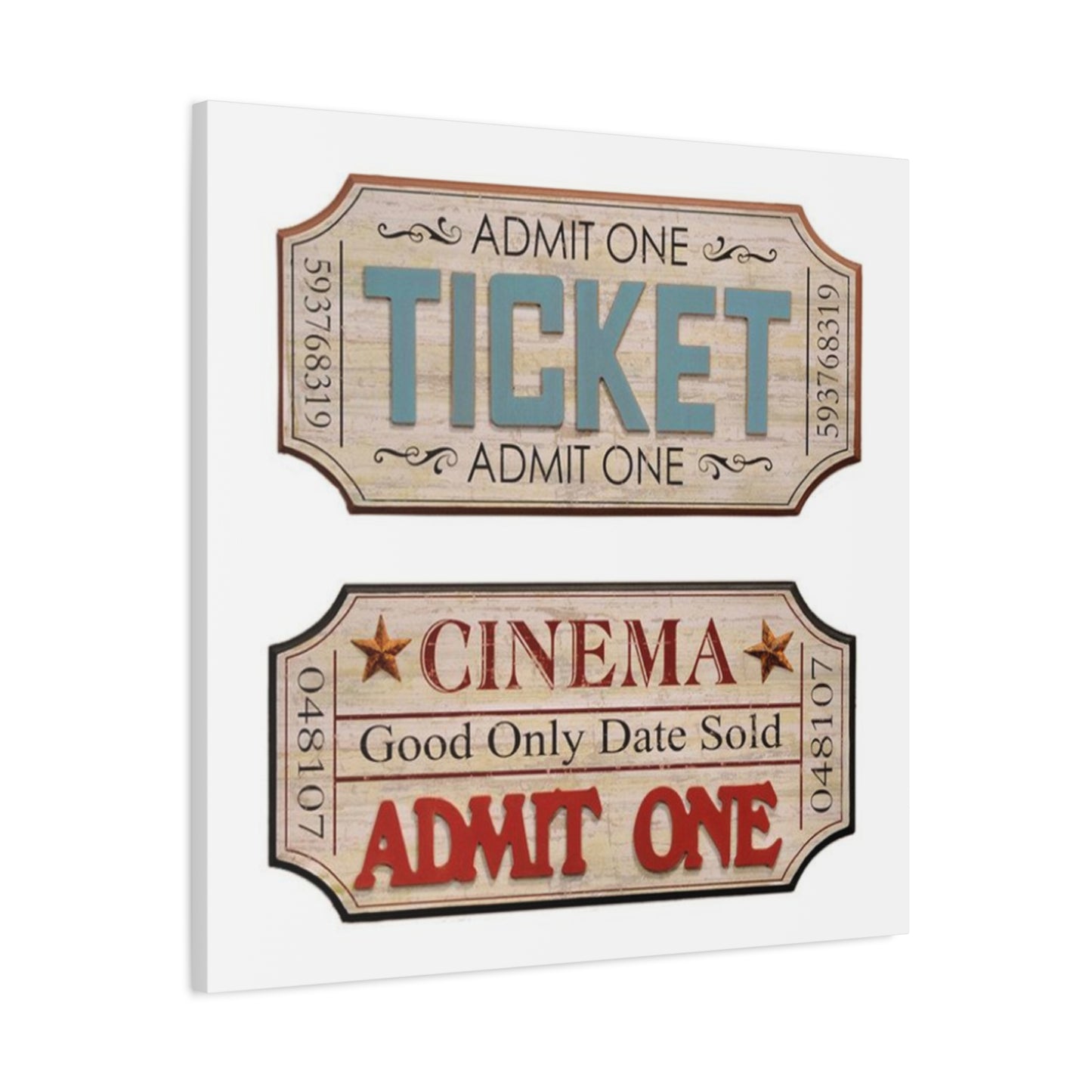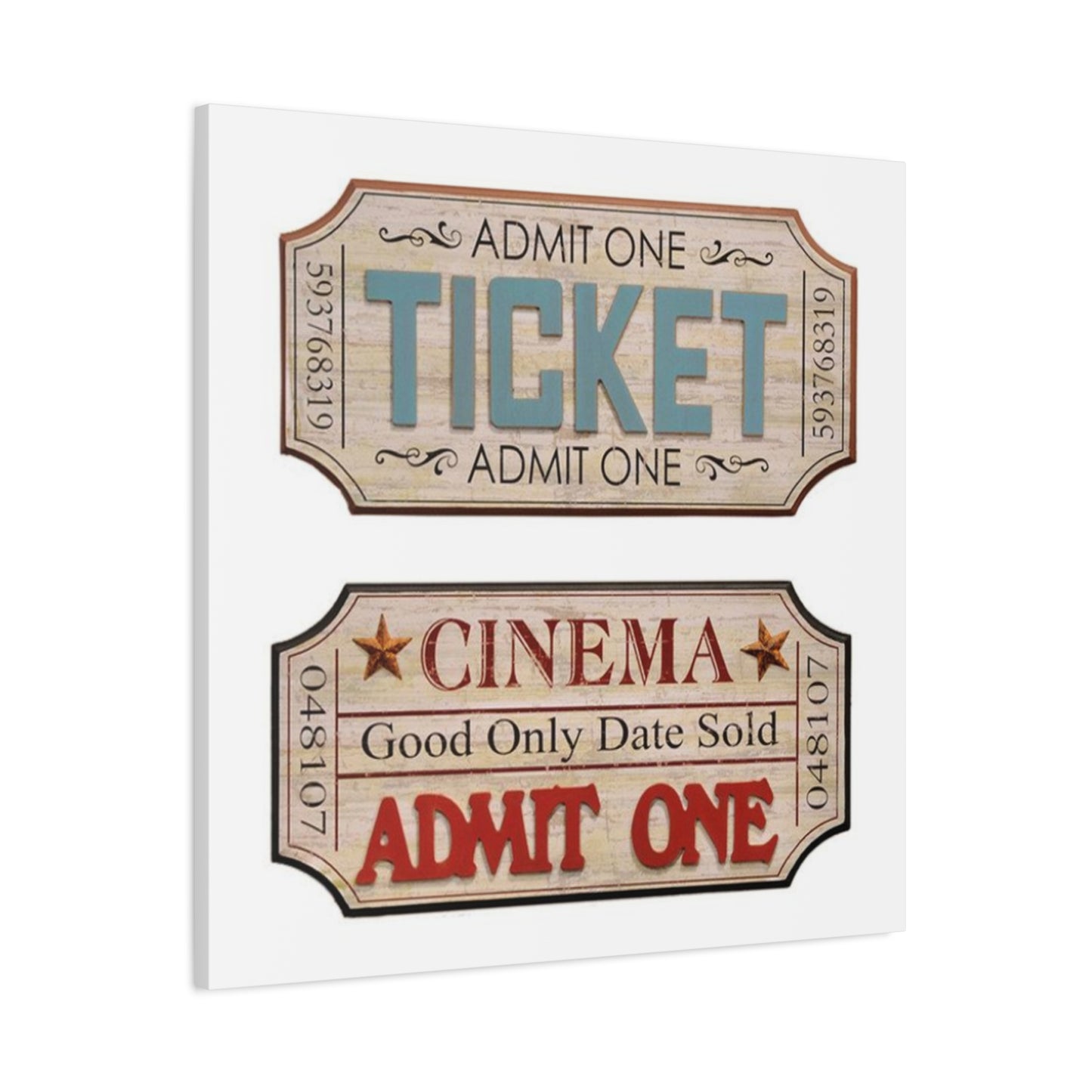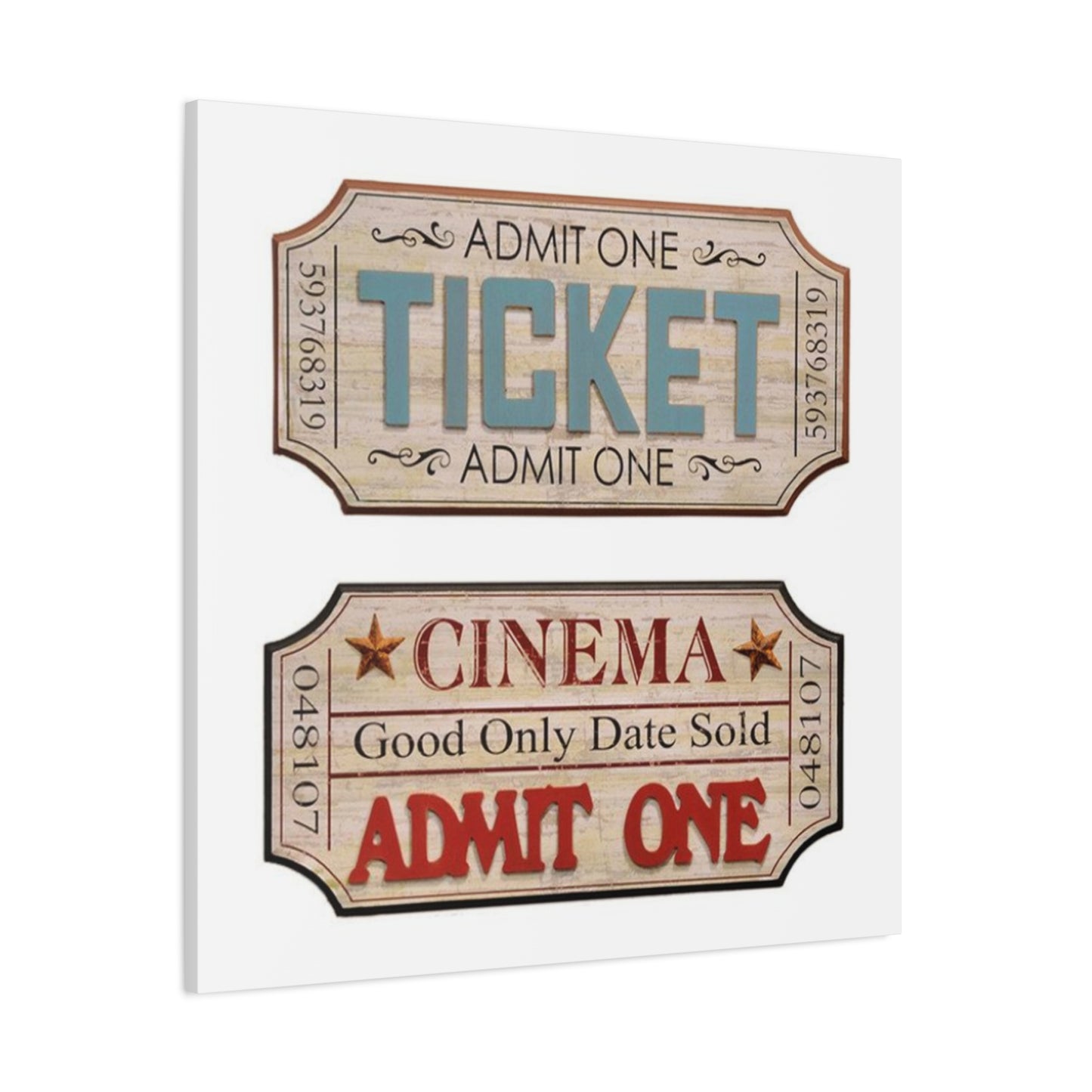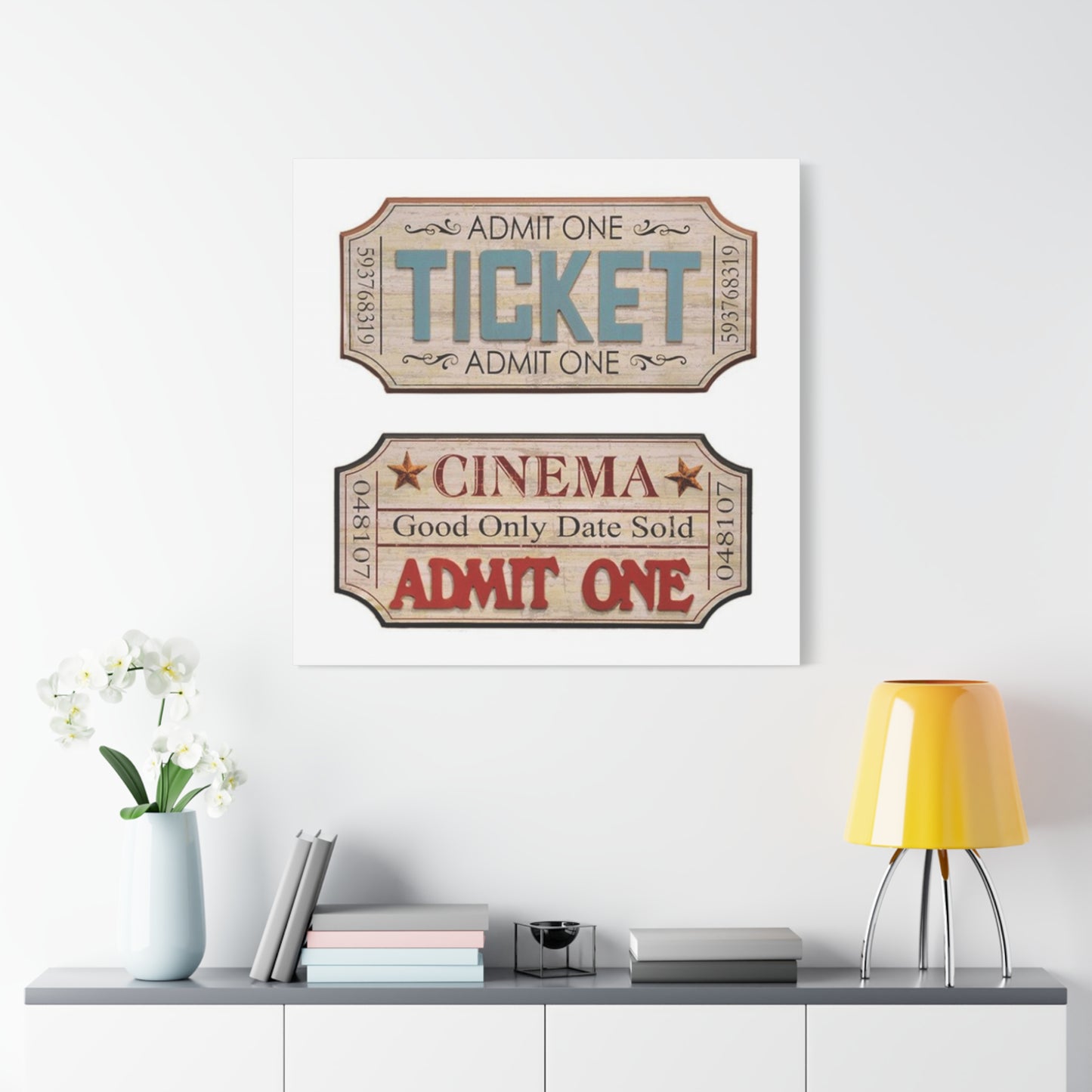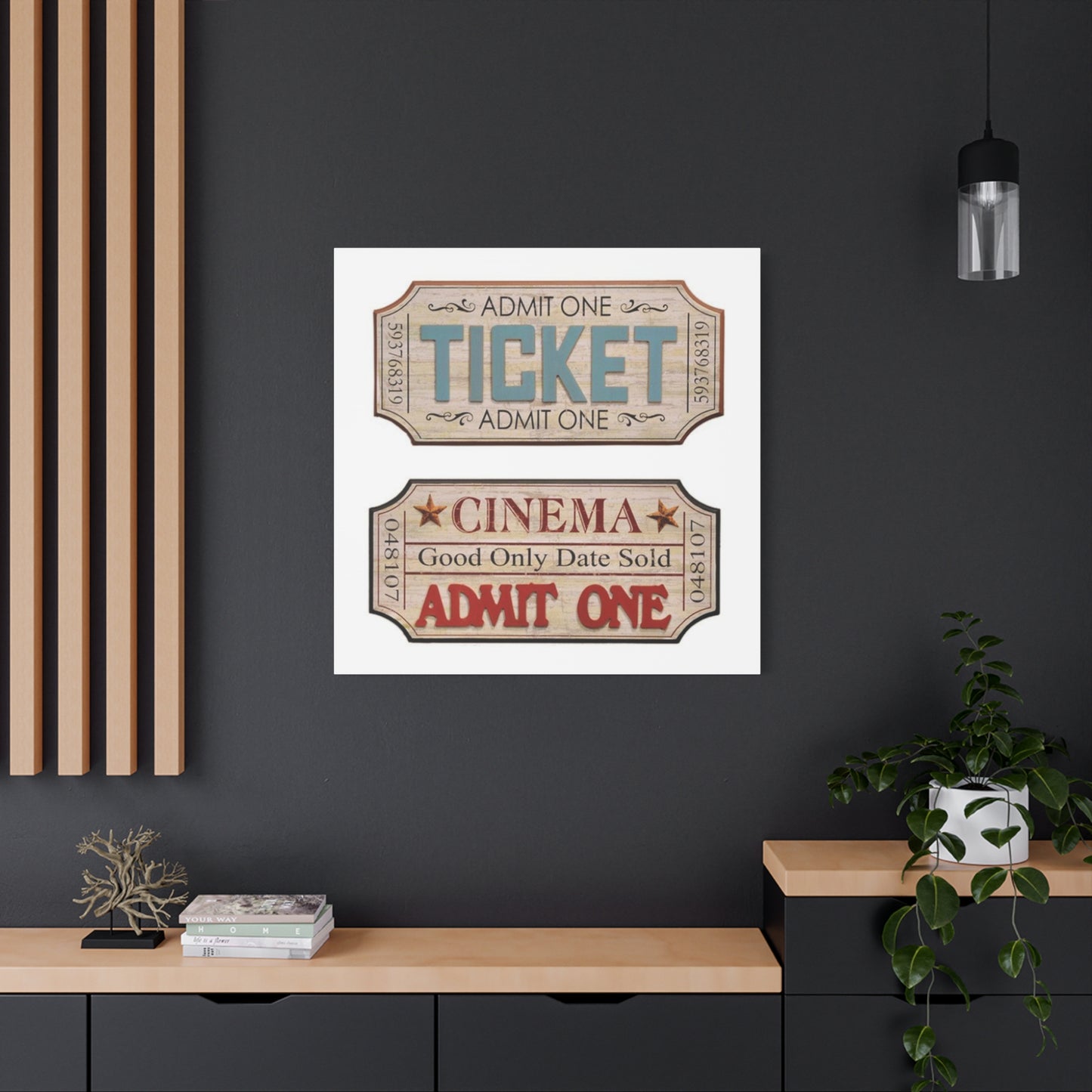Cinematic Wall Art: Elevating Your Home Theater with Movie-Inspired Décor
Creating the perfect home theater environment extends far beyond selecting the right audiovisual equipment. The visual ambiance plays a crucial role in transforming an ordinary room into an immersive cinematic experience. Movie-inspired wall art serves as the cornerstone of exceptional home theater design, offering endless possibilities to showcase your passion for cinema while creating an atmosphere that rivals professional theaters.
The art of curating cinematic wall décor involves understanding how different visual elements contribute to the overall viewing experience. From classic movie posters that evoke nostalgia to modern abstract interpretations of film themes, each piece serves a specific purpose in establishing the desired mood and aesthetic. The strategic placement and selection of movie-themed artwork can transport viewers into different eras of cinema, creating an environment that celebrates the rich history and artistry of filmmaking.
Contemporary home theater design embraces diverse artistic styles, allowing enthusiasts to express their unique tastes while maintaining cohesive visual narratives. The integration of movie-inspired wall art requires careful consideration of factors such as room size, lighting conditions, color schemes, and existing décor elements. When executed thoughtfully, cinematic wall art becomes more than mere decoration—it becomes an integral component of the entertainment experience itself.
Classic Movie Poster Wall Art for Theaters
Classic movie posters represent timeless pieces of cinematic history that bring authentic theater atmosphere directly into residential spaces. These iconic designs capture the essence of Hollywood's golden age, featuring legendary films that shaped the entertainment industry and continue to influence modern cinema. The appeal of classic movie posters lies in their ability to evoke specific emotions and memories while serving as conversation starters for guests and family members.
Authentic vintage movie posters from the 1930s through the 1980s command significant attention and value among collectors and home theater enthusiasts. These original pieces feature distinctive artwork styles, typography, and color palettes that reflect the marketing trends and artistic sensibilities of their respective eras. The craftsmanship evident in hand-drawn illustrations and carefully composed layouts demonstrates the artistry that went into promoting films before the digital age revolutionized advertising design.
Reproduction classic movie posters offer accessible alternatives for homeowners seeking the vintage aesthetic without the premium cost associated with original materials. High-quality reproductions maintain the visual impact and historical significance while providing flexibility in sizing and framing options. Many reproduction specialists use archival-quality materials and printing techniques that ensure longevity and color accuracy, making them suitable for long-term display in home theater environments.
The selection process for classic movie poster wall art should consider the overall theme and atmosphere desired for the theater space. Horror movie posters from the 1950s and 1960s create dramatically different ambiances compared to romantic comedies or epic adventure films from the same period. Grouping posters by genre, decade, or studio can create cohesive visual narratives that enhance the viewing experience and reflect the homeowner's cinematic preferences.
Proper preservation and display techniques are essential for maintaining the integrity and appearance of classic movie posters. Professional framing with UV-protective glass prevents fading and deterioration while museum-quality mounting materials ensure long-term stability. Climate-controlled environments help preserve paper-based materials, while strategic lighting placement eliminates harmful direct sunlight exposure that can cause irreversible damage to vintage artwork.
The arrangement of classic movie posters requires careful consideration of visual balance and flow throughout the theater space. Creating gallery walls with multiple posters of varying sizes can establish focal points and guide viewer attention, while single statement pieces can serve as dramatic centerpieces. The spacing between posters should maintain visual breathing room while creating cohesive groupings that tell compelling stories about cinema history and personal taste preferences.
Vintage Cinema Canvas Prints for Walls
Vintage cinema canvas prints offer contemporary interpretations of classic filmmaking aesthetics while providing durability and versatility for home theater applications. These modern reproductions capture the nostalgic charm of early cinema through carefully curated imagery that celebrates the artistry and craftsmanship of vintage movie production. Canvas prints provide texture and depth that enhance the visual impact of cinematic artwork while offering practical advantages over traditional paper-based materials.
The production process for vintage cinema canvas prints involves high-resolution digital reproduction techniques that preserve the subtle details and color variations present in original source materials. Advanced printing technologies ensure accurate color representation and sharp image quality that maintains visual integrity across various viewing distances. Gallery-wrapped canvas constructions eliminate the need for traditional framing while creating clean, contemporary presentations that complement modern home theater designs.
Vintage cinema themes encompass diverse aspects of early filmmaking, including behind-the-scenes photography, promotional imagery, and artistic interpretations of classic movie scenes. These elements combine to create comprehensive visual narratives that celebrate the evolution of cinema from silent films through the emergence of color photography and sound recording technologies. The historical context provided by vintage cinema artwork enhances the educational and entertainment value of home theater spaces.
Color palettes in vintage cinema canvas prints typically feature sepia tones, black and white imagery, and muted color schemes that reflect the photographic techniques and artistic preferences of earlier decades. These subdued color combinations create calming atmospheres that complement the focused attention required for movie viewing while providing visual interest during intermissions and social gatherings. The neutral tones also coordinate well with various interior design styles and color schemes.
Size variations in vintage cinema canvas prints accommodate different wall spaces and design requirements within home theater environments. Large format prints create dramatic focal points suitable for accent walls and primary viewing areas, while smaller pieces work effectively in groupings or as supporting elements throughout the space. The scalability of canvas prints allows for customized sizing that maximizes visual impact within specific architectural constraints.
Installation considerations for vintage cinema canvas prints include wall preparation, mounting hardware selection, and positioning relative to lighting sources and seating arrangements. Proper wall anchoring ensures secure attachment while protecting both the artwork and wall surfaces from damage. Strategic placement relative to ambient lighting sources enhances visibility and visual appeal without creating glare or reflections that interfere with movie viewing experiences.
Abstract Film Reel Wall Art Décor
Abstract film reel wall art represents a sophisticated approach to cinema-themed décor that emphasizes artistic interpretation over literal representation. These contemporary pieces explore the conceptual and emotional aspects of filmmaking through innovative design elements that capture the essence of motion, storytelling, and visual creativity. Abstract approaches allow artists and homeowners to express their passion for cinema through unique perspectives that transcend traditional movie poster aesthetics.
The design philosophy behind abstract film reel artwork focuses on the fundamental elements of cinema production, including the circular motion of film reels, the linear progression of storytelling, and the interplay between light and shadow that defines cinematography. Artists interpret these concepts through various mediums, including metal sculptures, mixed-media compositions, and digital art prints that translate cinematic principles into visual experiences suitable for home theater environments.
Material choices for abstract film reel wall art vary significantly, offering options that range from traditional canvas and paper prints to three-dimensional metal constructions and illuminated installations. Metal artwork provides industrial authenticity that reflects the mechanical aspects of film production while offering durability and distinctive visual textures. Mixed-media pieces combine multiple materials to create layered compositions that engage viewers through tactile and visual elements.
Color psychology plays a significant role in abstract film reel wall art design, with artists utilizing specific color combinations to evoke emotional responses and enhance the viewing atmosphere. Warm metallic tones suggest vintage film equipment and nostalgic cinema experiences, while cool blues and grays create modern, sophisticated ambiances suitable for contemporary theater designs. Bold accent colors can highlight specific design elements and create visual connections with other décor components throughout the space.
The sculptural quality of many abstract film reel pieces adds dimensional interest to flat wall surfaces while creating dynamic shadows and light interactions that change throughout the day. Three-dimensional elements provide visual depth and texture that engage viewers from multiple angles and viewing distances. These dimensional qualities make abstract film reel artwork particularly effective in spaces with varied lighting conditions and multiple seating arrangements.
Placement strategies for abstract film reel wall art should consider the viewing angles and traffic patterns within home theater spaces. Pieces with strong directional elements can guide attention toward screens and primary seating areas, while more neutral compositions provide visual interest without competing for attention during movie viewing. The abstract nature of these pieces allows for creative arrangement possibilities that support both functional and aesthetic objectives.
Iconic Hollywood Stars Canvas Prints
Iconic Hollywood stars canvas prints celebrate the legendary performers who defined cinema's most memorable eras and continue to influence contemporary entertainment culture. These portraits capture the charisma, talent, and screen presence of actors and actresses who became cultural icons through their contributions to film artistry. The enduring appeal of Hollywood star imagery reflects society's fascination with celebrity culture and the aspirational qualities associated with movie star lifestyles.
Portrait photography from Hollywood's golden age represents some of the most sophisticated and technically accomplished commercial photography ever produced. Studio photographers like George Hurrell, Clarence Sinclair Bull, and John Engstead created glamorous images that established visual standards for celebrity portraiture that continue to influence modern photography. These carefully composed and expertly lit photographs showcase the technical mastery and artistic vision that elevated movie star portraits to fine art status.
The selection of Hollywood stars for canvas print reproduction should reflect personal preferences while considering the historical significance and cultural impact of different performers. Classic stars like Marilyn Monroe, James Dean, Audrey Hepburn, and Humphrey Bogart offer instantly recognizable imagery with broad appeal, while lesser-known but equally talented performers can provide unique and sophisticated alternatives that demonstrate deeper cinema knowledge and appreciation.
Contemporary printing techniques for Hollywood star canvas prints utilize advanced color management and image processing technologies to reproduce the subtle tonal gradations and contrast ranges present in original studio photography. High-resolution scanning and digital restoration processes can enhance image quality while preserving the authentic character and aesthetic qualities of vintage photography. Archival inks and canvas materials ensure long-term color stability and durability suitable for permanent installation.
Grouping strategies for Hollywood star canvas prints can create thematic presentations that tell stories about specific eras, genres, or cinematic movements. Arranging portraits by decade creates chronological narratives that illustrate the evolution of Hollywood glamour and style, while genre-based groupings can highlight performers associated with specific types of films. Mixed arrangements that combine different eras and styles can create dynamic visual compositions that celebrate the diversity of cinema history.
The psychological impact of Hollywood star imagery in home theater environments extends beyond mere decoration to influence mood and expectations for entertainment experiences. The presence of iconic performers can create aspirational atmospheres that elevate the perceived quality and significance of movie viewing, while familiar faces provide comfort and nostalgia that enhance relaxation and enjoyment. The careful selection and presentation of star portraits can contribute significantly to the overall success of home theater design projects.
Modern Minimalist Theater Wall Art
Modern minimalist theater wall art embraces clean lines, simplified forms, and restrained color palettes to create sophisticated home theater environments that prioritize visual clarity and focused attention. This design approach eliminates unnecessary decorative elements while emphasizing the essential components that contribute to effective cinema presentation. Minimalist principles create calming atmospheres that reduce visual distractions and enhance concentration during movie viewing experiences.
The philosophical foundation of minimalist design emphasizes quality over quantity, encouraging the selection of fewer but more impactful artistic pieces that serve specific functional and aesthetic purposes. In home theater applications, this translates to carefully curated artwork that complements rather than competes with the primary entertainment technology while maintaining visual interest during non-viewing periods. The restraint characteristic of minimalist design requires careful attention to proportion, balance, and spatial relationships.
Geometric abstractions represent popular choices for modern minimalist theater wall art, utilizing simple shapes, lines, and forms to create visual interest without overwhelming complexity. These designs can incorporate cinema-related themes through subtle references to screen ratios, projection angles, or sound wave patterns while maintaining the clean aesthetic principles that define minimalist style. The mathematical precision of geometric designs creates order and harmony that supports focused attention and relaxation.
Color selection for minimalist theater wall art typically involves monochromatic or limited color palettes that create cohesive visual environments without excessive stimulation. Black, white, and gray combinations provide classic sophistication while allowing colorful movie content to take visual precedence. Neutral earth tones create warm, inviting atmospheres that complement wood and leather materials commonly used in home theater construction. Subtle accent colors can highlight specific architectural features or equipment elements without disrupting the overall minimalist aesthetic.
Material choices for minimalist theater wall art often emphasize natural textures and high-quality finishes that demonstrate craftsmanship and attention to detail. Canvas prints with subtle textures provide visual interest without excessive pattern or decoration, while metal prints offer sleek, contemporary appearances that complement modern technology installations. The quality of materials and construction becomes more apparent and important in minimalist designs where each element receives greater individual attention.
Lighting integration plays a crucial role in minimalist theater wall art presentation, with carefully controlled illumination enhancing the visual impact of simplified designs while maintaining the subdued atmospheres necessary for optimal movie viewing. LED strip lighting, picture lights, and recessed fixtures can highlight specific pieces without creating excessive ambient light levels. The interaction between artificial lighting and artwork creates dynamic visual experiences that change throughout viewing sessions while respecting minimalist design principles.
Black and White Movie Scene Wall Décor
Black and white movie scene wall décor captures the timeless elegance and dramatic power of monochromatic cinematography while creating sophisticated visual environments that complement modern home theater designs. The absence of color focuses attention on composition, lighting, contrast, and emotional content that define exceptional filmmaking artistry. Black and white imagery provides versatility that coordinates with virtually any interior design scheme while maintaining strong visual impact and cultural significance.
The artistic legacy of black and white cinema encompasses some of the most acclaimed and influential films in movie history, including classics from directors like Orson Welles, Akira Kurosawa, Billy Wilder, and Alfred Hitchcock. These filmmakers utilized monochromatic imagery not as a limitation but as a creative tool that enhanced storytelling through dramatic lighting, shadow play, and tonal composition. Contemporary reproductions of iconic scenes from these films bring this artistic heritage into residential spaces.
Technical considerations for reproducing black and white movie scenes include maintaining the subtle gradations and contrast ranges that define high-quality monochromatic imagery. Professional scanning and printing processes must preserve the full tonal range from pure whites to deep blacks while accurately representing the intermediate gray values that create depth and dimension. Archival materials and pigment-based inks ensure long-term stability and prevent the color shifts that can degrade monochromatic reproductions over time.
Scene selection for black and white movie wall décor should balance recognizability with artistic merit, choosing images that function effectively as standalone artwork while maintaining connection to their cinematic origins. Iconic moments from classics like "Casablanca," "Citizen Kane," "The Third Man," and "Sunset Boulevard" offer instant recognition and emotional resonance for film enthusiasts. Lesser-known but visually striking scenes can provide unique alternatives that demonstrate sophisticated cinema appreciation.
Framing and presentation options for black and white movie scenes range from traditional gallery-style matting and framing to contemporary edge-to-edge mounting systems that emphasize the photographic nature of the imagery. The choice of frame colors and materials can significantly influence the perceived character and style of the presentations, with black frames emphasizing drama and sophistication while white or metallic frames create lighter, more contemporary appearances.
The psychological impact of black and white imagery in home theater environments creates associations with classic cinema elegance and artistic sophistication. The monochromatic palette eliminates color-based distractions while emphasizing the fundamental visual elements that define compelling imagery. This focus on essential elements creates meditative qualities that enhance relaxation and concentration during movie viewing while providing rich visual experiences during social interaction periods.
Popcorn & Film Theme Canvas Wall Art
Popcorn and film theme canvas wall art brings playful, nostalgic elements to home theater designs while celebrating the cultural traditions and sensory experiences associated with movie viewing. These whimsical pieces acknowledge the social and recreational aspects of cinema entertainment, creating welcoming atmospheres that encourage relaxation and enjoyment. The combination of food imagery with film elements creates unique visual narratives that appeal to all ages and viewing preferences.
The historical connection between popcorn and movie theaters dates back to the early 20th century when the affordable snack became synonymous with cinema entertainment. This cultural association creates instant recognition and emotional connection for viewers who associate the sight and smell of popcorn with positive movie-going experiences. Contemporary artistic interpretations of this relationship range from realistic food photography to stylized graphic designs that emphasize the fun and casual aspects of home entertainment.
Artistic styles for popcorn and film theme canvas wall art encompass diverse approaches that can complement various home theater design philosophies. Vintage-inspired designs featuring retro color palettes and typography create nostalgic connections to classic movie theater experiences, while modern graphic interpretations utilize bold colors and simplified forms that appeal to contemporary aesthetic preferences. Photography-based pieces can capture the realistic textures and visual appeal of fresh popcorn while incorporating film elements through creative composition and lighting.
Color psychology in popcorn and film theme artwork typically emphasizes warm, inviting tones that create comfortable, social atmospheres conducive to shared entertainment experiences. Golden yellows and warm reds associated with popcorn and movie theater aesthetics create cozy, welcoming environments that encourage relaxation and social interaction. These warm color palettes contrast effectively with the cool blues and grays often used in modern home theater technology and furnishings.
Interactive elements in popcorn and film theme artwork can enhance the playful nature of these pieces through textural contrasts, dimensional components, or integrated lighting features. Mixed-media compositions might combine photographic elements with three-dimensional objects or textured surfaces that invite tactile interaction. LED backlighting or spotlighting can create dramatic presentations that emphasize the festive nature of movie snacking traditions.
Installation considerations for popcorn and film theme canvas wall art should account for the informal, social nature of these pieces by placing them in areas that encourage interaction and conversation. Concession stand areas, game rooms, or informal seating areas provide appropriate contexts for playful artwork that might be inappropriate in formal viewing environments. The casual nature of these pieces makes them suitable for family-friendly spaces where children and adults can appreciate the whimsical themes.
Retro Home Theater Poster Prints
Retro home theater poster prints celebrate the aesthetic sensibilities and design trends of previous decades while creating authentic period atmospheres that transport viewers to specific eras of cinema history. These carefully curated reproductions capture the graphic design principles, color palettes, and typography styles that defined movie marketing during the golden age of cinema advertising. Retro aesthetics provide rich visual experiences that appeal to nostalgia while demonstrating sophisticated appreciation for design history.
The development of movie poster design evolved significantly throughout the 20th century, reflecting changing artistic movements, printing technologies, and marketing strategies. Early hand-painted posters from the 1920s and 1930s demonstrate exceptional artistic craftsmanship, while the bold graphic designs of the 1960s and 1970s reflect pop art influences and psychedelic aesthetic movements. Understanding these historical contexts enhances appreciation for retro poster reproductions while guiding appropriate selection and presentation decisions.
Typography plays a crucial role in retro poster design, with distinctive lettering styles and font choices that immediately communicate specific time periods and cultural contexts. Art deco fonts from the 1930s create sophisticated, elegant impressions, while bold san-serif typefaces from the 1960s project energy and modernity. The careful reproduction of original typography maintains authenticity while ensuring readability and visual impact in contemporary home theater environments.
Color reproduction techniques for retro poster prints must account for the printing limitations and artistic conventions of earlier decades while utilizing modern technology to enhance visual quality and longevity. Vintage color palettes often featured limited color ranges due to printing cost considerations, creating distinctive aesthetic qualities that define specific eras. Contemporary reproduction processes can enhance these historical palettes while maintaining authentic character and period-appropriate appearance.
Grouping strategies for retro poster prints can create immersive period environments that transport viewers to specific decades or cultural movements. Comprehensive collections representing single decades create cohesive historical narratives, while carefully selected pieces from multiple eras can illustrate the evolution of design trends and cultural attitudes. The arrangement and spacing of retro posters should reflect the gallery and exhibition practices contemporary with their original creation periods.
Lighting considerations for retro poster displays should complement the historical aesthetic while providing adequate illumination for appreciation and viewing. Period-appropriate lighting fixtures or carefully controlled modern lighting can enhance the authentic atmosphere while protecting artwork from damage. The warm color temperatures associated with incandescent lighting complement vintage color palettes while creating cozy, nostalgic atmospheres suitable for relaxed entertainment experiences.
Neon Lights Cinema Wall Art Ideas
Neon lights cinema wall art brings vibrant energy and contemporary excitement to home theater environments through illuminated displays that capture the dynamic visual culture of modern entertainment venues. These electric art installations combine traditional neon tube technology with contemporary design aesthetics to create dramatic focal points that function as both artwork and functional lighting elements. The bright colors and animated possibilities of neon lighting transform static wall displays into dynamic visual experiences.
The history of neon lighting in cinema applications dates back to the early days of movie theater design when illuminated marquees and signs became essential elements of theater architecture. These bright, attention-grabbing displays communicated showtimes, movie titles, and promotional messages while creating distinctive visual identities for individual theaters. Contemporary home theater applications draw inspiration from this commercial heritage while adapting the technology for residential use and personal expression.
LED neon alternatives provide modern interpretations of traditional neon lighting that offer advantages in terms of energy efficiency, safety, and design flexibility. These solid-state lighting systems can reproduce the visual characteristics of gas-filled neon tubes while providing programmable color-changing capabilities and remote control operation. LED neon strips can be shaped into custom configurations and integrated with home automation systems for synchronized lighting effects during movie presentations.
Design possibilities for neon cinema wall art include recreations of classic movie theater signage, abstract representations of film equipment, inspirational quotes from famous movies, and custom monograms or family names in cinema-style lettering. The linear nature of neon lighting naturally lends itself to typographic applications, while curved and shaped installations can create sculptural elements that add dimensional interest to flat wall surfaces. The bright illumination creates high-contrast presentations that command attention and create memorable visual impressions.
Color selection for neon cinema wall art should consider both aesthetic preferences and functional lighting requirements for home theater environments. Traditional neon colors like bright red, blue, and white create authentic theater marquee appearances, while contemporary LED systems offer virtually unlimited color options including subtle pastels and sophisticated gradients. The ability to dim or program color-changing sequences allows for dynamic presentations that can adapt to different viewing situations and personal moods.
Installation requirements for neon cinema wall art include electrical planning, mounting systems, and safety considerations that ensure proper operation and longevity. Professional installation may be necessary for traditional neon systems that require high-voltage transformers and specialized mounting hardware. LED alternatives offer more flexible installation options but still require proper electrical connections and control systems for optimal performance and safety compliance.
Action Movie Inspired Canvas Prints
Action movie inspired canvas prints capture the excitement, energy, and visual spectacle that define the most thrilling cinema experiences through dynamic imagery and bold artistic interpretations. These high-impact pieces translate the kinetic energy and emotional intensity of action films into static visual presentations that maintain excitement and engagement long after viewing sessions conclude. The dramatic nature of action movie themes provides rich source material for compelling artwork that appeals to adventure-seeking audiences.
Visual elements characteristic of action movies include explosive effects, dynamic motion, heroic characters, and dramatic lighting that creates tension and excitement. Artists interpreting these themes for canvas print applications must distill these complex visual narratives into single images that convey the essential energy and emotional impact of their source material. Successful action movie artwork captures specific moments that represent broader themes of heroism, conflict, and triumph.
Composition techniques for action-inspired artwork often employ diagonal lines, asymmetrical balance, and dramatic perspective angles that suggest movement and create visual tension. These dynamic arrangements keep viewers engaged while reflecting the fast-paced nature of action movie storytelling. The use of leading lines and directional elements can guide viewer attention while creating sense of motion and progression that mirrors cinematic pacing and timing.
Color palettes for action movie canvas prints typically feature bold, high-contrast combinations that reflect the dramatic lighting and special effects common in action cinema. Fiery oranges and reds suggest explosions and intensity, while cool blues and grays create technological or urban environments associated with modern action films. Metallic accents can reference weapons, vehicles, and technological elements that frequently appear in action movie narratives.
Character representation in action movie artwork must balance recognizability with legal considerations regarding licensing and copyright protection. Stylized interpretations, silhouettes, and abstract references can capture the essence of iconic action heroes while avoiding potential legal complications. Original character designs inspired by action movie archetypes can provide unique alternatives that maintain thematic relevance while offering completely original artistic content.
Size considerations for action movie canvas prints should reflect the larger-than-life nature of the genre while accommodating practical space limitations in home theater environments. Large format prints create impressive presentations that match the epic scale associated with action movies, while series of smaller prints can tell sequential stories or present multiple perspectives on action themes. The scaling decisions should support the dramatic impact necessary to effectively represent action movie excitement and energy.
Musical Theater Wall Art for Homes
Musical theater wall art celebrates the unique combination of music, drama, and visual spectacle that defines live theatrical entertainment while bringing the sophistication and cultural richness of stage performances into residential spaces. These artistic pieces acknowledge the important role that musical theater plays in entertainment culture while providing opportunities to showcase personal interests and cultural appreciation. The elaborate costumes, dramatic lighting, and emotional performances associated with musical theater provide rich visual material for compelling artwork.
The artistic heritage of musical theater encompasses diverse styles and periods, from classic Broadway productions of the early 20th century through contemporary touring productions and innovative experimental works. Historical productions like "West Side Story," "My Fair Lady," and "Oklahoma!" established visual and thematic templates that continue to influence modern musical theater design. Contemporary works like "Hamilton," "Wicked," and "The Lion King" demonstrate the evolution of musical theater aesthetics and the integration of new technologies and artistic approaches.
Character portrayal in musical theater artwork must capture the emotional intensity and dramatic expression that define exceptional stage performances. The exaggerated gestures, elaborate costumes, and dramatic makeup used in live theater create distinctive visual characteristics that translate effectively to wall art applications. Artists working with musical theater themes can emphasize these theatrical elements to create artwork that maintains the energy and emotional impact of live performances.
Color applications in musical theater wall art often reflect the bold, saturated palettes used in stage lighting and costume design to ensure visibility and emotional impact in large theater venues. These vibrant color schemes create exciting, energetic presentations that can enhance home theater environments while reflecting the celebratory nature of musical theater entertainment. The dramatic use of light and shadow in stage productions provides additional inspiration for artistic interpretations.
Typography integration in musical theater artwork can incorporate show titles, song lyrics, or inspirational quotes from famous productions to create personalized presentations that reflect specific interests and preferences. The decorative lettering styles developed for musical theater marketing materials offer distinctive design elements that immediately communicate the theatrical theme while adding textual content that enhances the overall artistic message.
Dimensional elements in musical theater wall art can reference the three-dimensional nature of stage design through layered compositions, textural contrasts, or sculptural components that create depth and visual interest. Mixed-media approaches might combine photographic elements with painted or drawn components to create complex presentations that reflect the multimedia nature of musical theater productions. These dimensional qualities can create engaging presentations that reward close examination and repeated viewing.
Comedy & Drama Mask Canvas Wall Décor
Comedy and drama mask canvas wall décor represents one of the most recognizable and enduring symbols of theatrical arts, providing classical imagery that connects contemporary home theater spaces with the ancient traditions of dramatic performance. These iconic symbols communicate universal themes of human emotion and artistic expression while serving as sophisticated decorative elements that demonstrate cultural awareness and artistic appreciation. The timeless appeal of theatrical masks transcends specific entertainment genres while maintaining relevance to all forms of dramatic presentation.
The historical origins of comedy and drama masks trace back to ancient Greek theater, where actors used physical masks to project their voices and express exaggerated emotions to audiences in large outdoor amphitheaters. These practical performance tools evolved into symbolic representations of the dual nature of human experience and the artistic exploration of joy and sorrow through dramatic arts. Contemporary interpretations of these classical symbols maintain their essential meaning while adapting to modern aesthetic preferences and design requirements.
Artistic interpretations of comedy and drama masks range from traditional classical representations that emphasize historical accuracy and cultural authenticity to contemporary stylized versions that incorporate modern design elements and materials. Traditional representations often feature ornate decorative details, classical proportions, and earth-tone color palettes that reflect ancient artistic conventions. Modern interpretations might emphasize simplified forms, bold colors, or innovative materials that create fresh perspectives on familiar themes.
Symbolic meaning in comedy and drama mask artwork extends beyond simple decoration to encompass philosophical themes about the nature of performance, emotion, and human experience. The juxtaposition of contrasting emotions represented by the laughing and crying masks creates opportunities for contemplation about the complexity of life and art. This deeper significance makes theatrical mask artwork particularly appropriate for spaces dedicated to entertainment and cultural appreciation.
Placement strategies for comedy and drama mask décor should consider the formal or informal nature of home theater environments while respecting the cultural significance of these symbols. Formal theater spaces benefit from traditional presentations that emphasize the classical heritage and cultural importance of theatrical arts, while casual entertainment areas might accommodate more playful or contemporary interpretations that maintain thematic relevance while supporting relaxed social atmospheres.
Color coordination for comedy and drama mask artwork can emphasize the contrast between the two emotional states through complementary color schemes, or create unified presentations through monochromatic or analogous color relationships. Metallic finishes can add sophistication and permanence that reflects the enduring nature of theatrical traditions, while vibrant colors can create contemporary relevance and visual excitement suitable for modern home theater designs.
Large Format Film Poster Wall Art
Large format film poster wall art creates commanding visual presentations that transform ordinary walls into dramatic focal points worthy of professional theater installations. These oversized pieces capture attention immediately while providing sufficient detail and visual impact to maintain interest across various viewing distances and lighting conditions. The scale of large format presentations allows for appreciation of design elements and artistic details that might be lost in smaller reproductions while creating immersive environments that celebrate cinema culture.
Technical considerations for large format printing include resolution requirements, color accuracy, and material selection that ensure professional-quality results suitable for permanent installation. High-resolution source materials are essential for maintaining sharp detail and clear typography when images are enlarged beyond their original dimensions. Professional printing services utilize advanced digital printing technologies and color management systems that preserve the visual integrity of original movie poster designs while adapting to different sizes and substrate materials.
Material options for large format film posters include traditional paper stocks, canvas substrates, vinyl films, and specialty materials designed for specific installation requirements and aesthetic preferences. Canvas provides texture and durability suitable for long-term display, while paper options can achieve exceptional detail and color accuracy for shorter-term installations. Vinyl materials offer weather resistance and easy cleaning for challenging environmental conditions, making them suitable for outdoor or high-traffic installations.
Mounting and installation systems for large format posters must accommodate the weight and dimensions of oversized prints while providing secure attachment that prevents damage from environmental factors or normal handling. Professional mounting systems might include rigid backing materials, edge finishing treatments, and specialized hardware designed for heavy artwork installations. The mounting approach should consider wall structure, stud locations, and distribution of weight to ensure safe and stable long-term installation.
Lighting considerations for large format film posters become increasingly important as size increases, since larger surfaces require more illumination to maintain even brightness and color consistency. Track lighting, picture lights, or integrated LED systems can provide adequate illumination while minimizing glare and hot spots that create uneven viewing experiences. The lighting design should complement the poster imagery while providing sufficient illumination for appreciation during various ambient light conditions.
Curatorial approaches to large format film poster selection should balance personal preferences with space limitations and overall design objectives. Single statement pieces can serve as room centerpieces that establish thematic directions for entire theater spaces, while carefully planned groupings can create comprehensive exhibitions that tell specific stories about cinema history or personal interests. The powerful visual impact of large format presentations requires thoughtful integration with other design elements to maintain balanced and harmonious environments.
Home Theater Entryway Canvas Prints
Home theater entryway canvas prints serve as important transitional elements that prepare visitors for the entertainment experiences awaiting them while establishing aesthetic themes and mood expectations before entering primary viewing areas. These carefully selected pieces function as previews of the cinema experiences to come while providing opportunities to display personal tastes and cultural interests in sophisticated, welcoming presentations. The entryway location demands artwork that creates positive first impressions while maintaining thematic consistency with interior theater designs.
Psychological impact of entryway artwork influences visitor expectations and emotional states before entertainment experiences begin, making thoughtful selection particularly important for creating successful home theater environments. Exciting, dynamic imagery can build anticipation and energy for upcoming movie viewing, while sophisticated, elegant presentations can establish cultural credibility and demonstrate serious appreciation for cinema arts. The entryway artwork sets the tone for everything that follows while creating lasting impressions about the homeowner's interests and aesthetic preferences.
Scale considerations for entryway canvas prints must account for architectural proportions and viewing distances specific to transitional spaces that typically feature shorter observation times than primary entertainment areas. Oversized pieces can create dramatic impact suitable for grand entrances and spacious foyers, while smaller groupings might be more appropriate for intimate passages or narrow hallways. The scale relationships between artwork and architectural elements should create harmonious proportions that enhance rather than overwhelm the existing space.
Thematic connections between entryway artwork and interior theater designs help create cohesive visual narratives that guide visitors smoothly from public areas into private entertainment spaces. Preview images from favorite films can create anticipation for the viewing experiences ahead, while abstract cinema-themed artwork can establish sophisticated cultural contexts without revealing specific preferences or planned programming. The thematic approach should support the overall design concept while providing flexibility for changing entertainment choices.
Lighting requirements for entryway canvas prints often differ from interior theater lighting needs, as transitional spaces typically require brighter illumination for safety and practical navigation purposes. The artwork must remain visually effective under these higher light levels while complementing the overall lighting design for the entrance sequence. Adjustable lighting systems can provide optimal presentation during social periods while dimming appropriately when transitioning toward movie viewing experiences.
Durability considerations for entryway installations include exposure to temperature changes, humidity variations, and increased air circulation that can affect canvas materials and printing substrates over time. High-quality archival materials and professional framing or mounting systems help ensure long-term stability and appearance retention despite challenging environmental conditions. Regular maintenance and inspection help identify potential issues before they become significant problems requiring expensive repairs or replacement.
Bold Abstract Movie-Inspired Wall Décor
Bold abstract movie-inspired wall décor transforms cinematic concepts into contemporary artistic expressions that emphasize color, form, and emotional content over literal representation. These innovative pieces appeal to sophisticated audiences who appreciate both cinema culture and modern art movements while creating unique visual experiences that cannot be replicated through traditional movie poster displays. Abstract interpretations provide endless creative possibilities while maintaining thematic connections to film and entertainment culture.
Artistic philosophy behind abstract movie-inspired artwork focuses on distilling the essential emotional and visual elements of cinema experiences into pure artistic expressions that transcend specific films or genres. Color relationships might represent emotional arcs from dramatic narratives, while geometric forms could suggest technological aspects of film production or projection. These conceptual approaches create artwork that functions independently while maintaining meaningful connections to cinema themes.
Color theory applications in bold abstract movie décor utilize psychological and cultural associations between specific colors and emotional or thematic content found in various film genres. Warm reds and oranges can suggest action and excitement, cool blues might represent technology or futuristic themes, while high-contrast black and white combinations can reference classic cinema or film noir aesthetics. The bold application of color creates visual impact while supporting thematic messaging about cinema preferences and cultural associations.
Compositional strategies for abstract movie-inspired artwork often incorporate dynamic movement and visual rhythm that mirror cinematic pacing and editing techniques. Diagonal lines and asymmetrical arrangements suggest motion and energy, while layered compositions can reference the complex narratives and multiple storylines found in sophisticated films. The visual complexity rewards careful observation while creating engaging presentations that reveal new details and relationships through repeated viewing.
Mixed media possibilities in abstract movie wall décor allow artists to incorporate actual film elements, lighting components, or textural materials that create direct physical connections to cinema production processes. Strips of actual film stock can be integrated into compositions as design elements, while LED lighting can create dynamic color changes that reference projected movie imagery. These multimedia approaches create unique artistic pieces that cannot be reproduced through traditional printing methods.
Installation considerations for bold abstract movie décor include lighting requirements that enhance color relationships and reveal textural details while avoiding glare or reflection problems that interfere with artwork appreciation. Professional installation may be required for large-scale pieces or installations that incorporate electrical components or unusual mounting requirements. The bold nature of abstract artwork requires careful integration with existing room elements to maintain visual balance while allowing the artwork to achieve maximum impact.
Conclusion
Cinematic wall art offers an innovative and stylish way to transform home theaters and living spaces into immersive, movie-inspired environments. By featuring iconic scenes, abstract film motifs, or creative reinterpretations of cinematic moments, these artworks turn walls into visual storytelling canvases that celebrate the artistry and emotion of film. Whether displayed in dedicated home theaters, living rooms, or entertainment areas, cinematic wall art elevates interiors by combining visual appeal with the excitement and drama of the movie world, creating spaces that are both inspiring and immersive.
The appeal of cinematic wall art lies in its ability to evoke emotion, nostalgia, and imagination. Artists interpret film imagery through a range of styles—from photorealistic reproductions to abstract or pop-art inspired compositions—capturing the essence of beloved movies, memorable characters, and iconic visuals. Bold colors, dramatic contrasts, and dynamic compositions convey movement and intensity, allowing viewers to experience the excitement, suspense, and artistry of cinema on a daily basis. Each piece transforms walls into storytelling mediums, bridging the gap between interior design and the magic of film.
Beyond aesthetics, cinematic wall art carries symbolic and emotional significance. Film is a powerful medium that conveys universal themes such as love, courage, adventure, and human connection. Incorporating these artworks into home interiors fosters creativity, conversation, and a sense of inspiration, encouraging viewers to relive cherished cinematic experiences while infusing their spaces with personality and passion. Each canvas becomes a tribute to the storytelling power of cinema, enhancing the atmosphere of the room while inviting engagement and reflection.
From a design perspective, cinematic wall art is versatile and adaptable. Large-format canvases make bold focal points in home theaters, living rooms, or entertainment lounges, while smaller prints or curated gallery arrangements can accentuate hallways, reading nooks, or media walls. The use of vivid color schemes, iconic imagery, and creative interpretations allows cinematic art to harmonize with modern, eclectic, industrial, or contemporary interiors, ensuring a visually cohesive and stimulating environment.
Ultimately, cinematic wall art is more than decoration; it is a celebration of storytelling, creativity, and the magic of film. By thoughtfully integrating movie-inspired pieces into interior spaces, individuals can create environments that are visually striking, emotionally engaging, and uniquely personal. Each artwork transforms walls into immersive cinematic experiences that inspire imagination, elevate décor, and honor the enduring artistry of movies, bringing the thrill and beauty of the silver screen directly into the home.



















